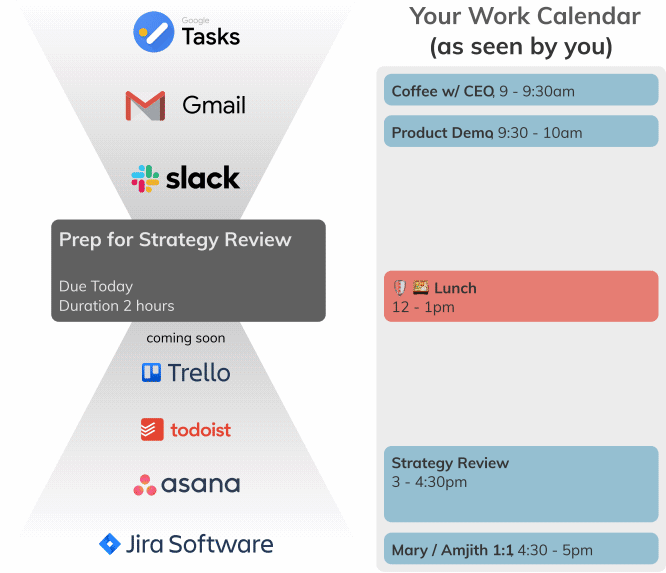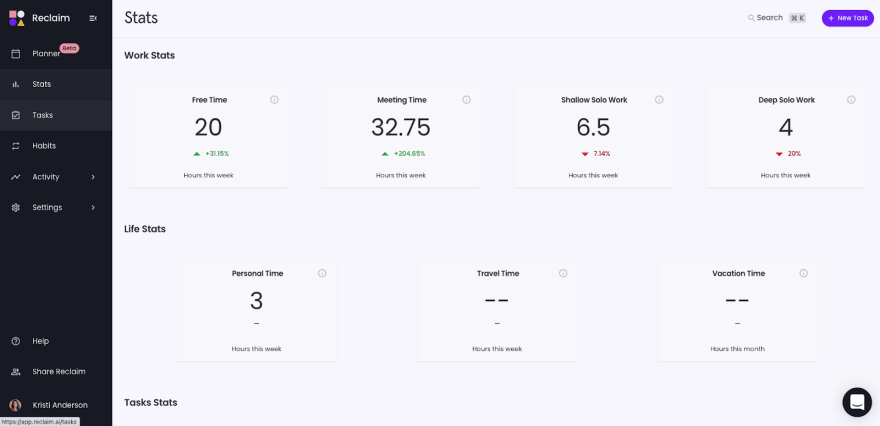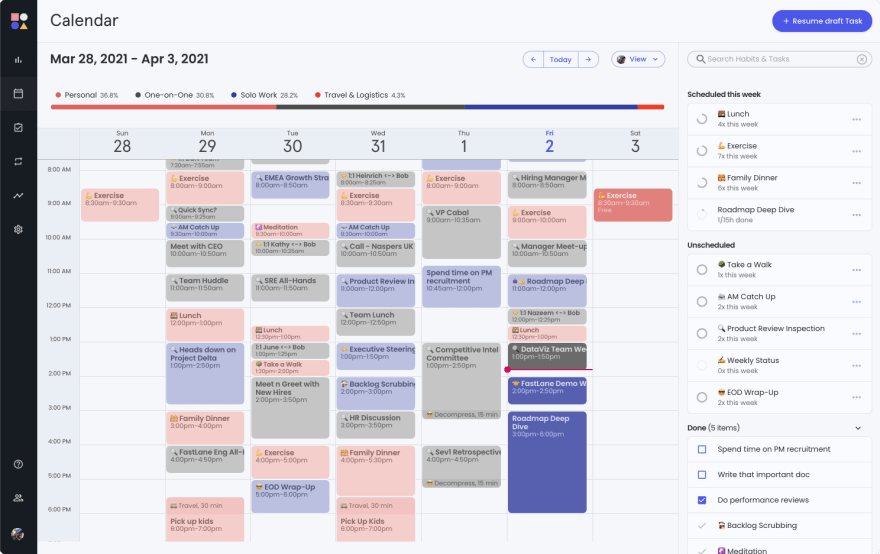Most people feel "time-poor" --- too many things to do and not enough time to do them. When it comes to time management, you want a simple formula to help you determine where you should be prioritizing your time.
In this article, learn how to use the Pareto Principle as a framework for priority management to help you focus on the tasks and habits that make the most significant contribution to your personal and professional well-being.
What is the Pareto Principle?
The Pareto Principle, also called the 80/20 rule, argues that 80% of results come from 20% of the effort. Economist Vilfredo Pareto first introduced the concept in the 1900s when he found that 80% of Italy's wealth was concentrated among 20% of the population. Since then, his principle has been used to show trends in everything from the world's richest nations to open-source software activity.
You can see the 80/20 principle take shape in other industries as well. In the automotive industry, Toyota wanted to establish the life cycle of a car's carbon emissions and discovered 20% of a car's carbon footprint came from its manufacture, and 80% from its use.
How to apply the Pareto Principle to priority management for better results in less time
During the typical workday, there are always more things you could be doing: meetings to attend, tasks to cross off your list, emails to respond to. But you can't tackle everything.
When you apply the Pareto Principle to priority management, you commit to focusing on the highest-priority areas above all else. The goal behind this practice is to help you improve both your time management and project management because you'll be able to focus on the work that produces the highest yield, and deprioritize the stuff that matters less.
Here are three simple steps to help you get started on applying the Pareto Principle for your priorities:
Step 1: Identify your priorities
In order to devote more time to your priorities, you first need to determine what they are.
A good practice for identifying priorities is to consider what are the most important things you want to accomplish over the next few months. Your priorities should align with your long-term goals --- your personal North Star --- so you're confident you're moving in the right direction. Priorities are more useful when they're in the "Goldilocks zone"--- they shouldn't be so small that they're just tasks (e.g., write that strategy doc), and they shouldn't be so large that they don't have any concrete meaning or deliverables (e.g., build a great product).
If you need help identifying your priorities, there are some techniques you can try. David Allen's Getting Things Done (GTD) system is a productivity method that begins by recording everything that's pulling your attention --- a master list filled with all projects, tasks, and to-dos. If you're like most people, you'll likely end up with a long list. From there, you can use a prioritization technique like the Eisenhower Matrix to identify activities you should prioritize, delegate, or stop altogether. Make Time has also developed a planning system called One Big Thing where you essentially single-task your entire day around the one big thing you'd like to accomplish vs. slicing projects or days into many to-do's - a simple way to do more by planning less.
So, in short, you can follow these simple steps for qualifying your priorities:
- Identify your priorities
- Identify the 80/20
- Figure out what you need to do to produce that 20%. This doesn't mean you get to shirk the details, it just means you get to focus on the thing that really matters.
For example, say you've determined that your highest priority is shipping a new feature. To apply the Pareto Principle - 80/20 rule to determine which requirements to take on first, you consider that 80% of the value your users are going to receive is going to come from 20% of the feature -- the key things that they need to make it useful. What you would do is spend more of your time optimizing for the 20% that your customers will go nuts for, and accomplish the other 80% incrementally over time.
Or, for example, maybe your priority is improving employee onboarding. You want to isolate the biggest, most significant sources of confusion for new hires. After analyzing the most common questions, you find 80% of reported causes come from a handful of key onboarding processes. You dig deeper and find that the most prominent root cause is that team members aren't sure when and how to access the company's internal software, so you decide to focus your time on solving that issue. This not only helps you to get in front of the majority of issues, but it also helps you to identify the next highest priority to focus on next.
Step 2: Time block actions linked to your priorities
Now that you've determined what your priorities are, you can start mapping out your action plan by time blocking your to-dos on your calendar.
As discussed above, priorities are really the big projects you want to accomplish over a medium-sized span of time. There are many tasks that go into accomplishing the work behind a priority. To put it in practice, block off time in your calendar for specific pieces of work you need to get done. And, if you're applying the Pareto Principle, you focus on the activities that have the highest returns towards your goal.
A good way to start might be scheduling recurring routines for the things you know your priorities might require regularly. For example, if you're working on the go-to-market plan for a new feature, you might want to have a weekly habit to spend time researching competitors. Then, you'll want to start blocking off time for the individual tasks you need to take on to move your priority forward, such as testing releases in staging, writing help docs, and drafting emails to announce the launch to your users.
Time blocking your priorities is really quite easy once you dive in. Some people like to map out their entire plan on their calendar at the beginning of the priority, and adjust time blocks as schedules evolve. More commonly, people look at their calendar at the beginning of each week to add the tasks, events, and habits that are needed for the deliverables that week.
One thing you might find when blocking time for your tasks is that it's hard to stick to the plan with your schedule constantly changing! This is where you may find it helpful to use a tool like Reclaim for flexible time blocking. Reclaim adapts your time blocks to find the best slot in a changing schedule, and can quickly reprioritize your entire workweek around a single task when your priorities change.
Time blocking will help you keep a healthy pace of progress towards your priorities, and you'll likely also find it's a great way to communicate context to your colleagues around what's important to you that week.
Step 3: Continually analyze your time and priorities
Since the entire Pareto Principle really revolves around analyzing and understanding the true value and impact of your time, it's important to adopt some kind of ritual for continually auditing your schedule to see where your time is going.
Collecting and analyzing data on how you're spending your time will help you stay devoted to your high-value tasks. This information is key to continuously improving your prioritization!
A small but groundbreaking study published in the Journal of Organizational Behavior Management in 1982 found when people went through time management training and recorded the time they spent on tasks, they spent up to 10x more time on high-priority work.
Tracking and planning for priorities is actually highly driven on our own time estimations of what we think we need to accomplish them. In The 7 Habits of Highly Effective People, Stephen Covey recommends a time-tracking exercise where you log the actual amount of time you spend across activities for three days to help you determine:
- The accuracy of your estimation
- If you're satisfied with your actual time spent
- What you need to change
The important things to look out for when analyzing your time is what's pulling your attention from your priorities, and whether those interruptions are worthwhile. Is your workweek getting eaten alive by meetings, and if so, how much time does that leave you for solo work on your tasks?
A good place to start is to create categories for each of your priorities -- things like wellness, relationships, personal development, and work. This can help you evaluate which activities you're prioritizing highest for any given week. A helpful way to visualize this breakdown is color-coding your calendars so you get a sense of where your time is being spent at a glance.
Lastly, as you start to see the results of your effort come to light, you need to reevaluate what the next 80/20 opportunity for improvement is. Circling back on the employee onboarding scenario, if you eliminated 80% of the complaints by clarifying when and how to get set up with IT software, what's the next 80% issue impacting your employees?
There's nothing better than checking a priority off of your goal board and seeing the impact of your work! Now it's time to get moving on which high-impact project to prioritize next.
Improve your priority management using the Pareto Principle
Being effective and constantly busy are not one and the same. As you've likely experienced firsthand, spinning too many plates comes at the expense of progress on your most important work.
When you apply the Pareto Principle to prioritization, you shine a light on the activities --- the 20% --- that will bring the best results in the shortest time. Don't be afraid to pare down your calendar and your task list. Instead of ticking off one low-value task after another, try using the 80/20 rule to make sure you're building something meaningful in exchange for your time.
Top Posts
May 25, 2021
Pareto Principle: Using the 80/20 Rule for Priority Management
May 11, 2021
10 Google Calendar Issues You Didn't Know You Had
April 28, 2021
3 Single-Tasking Tips to Improve Your Focus
April 22, 2021
How to Create a Smart Calendar
April 5, 2021
Announcing the Planner Beta: a New Way to Manage Your Workweek
March 25, 2021
4 Tried and True Time Blocking Planner Approaches to Squeeze More From Busy Schedules
April 23, 2020





Top comments (0)